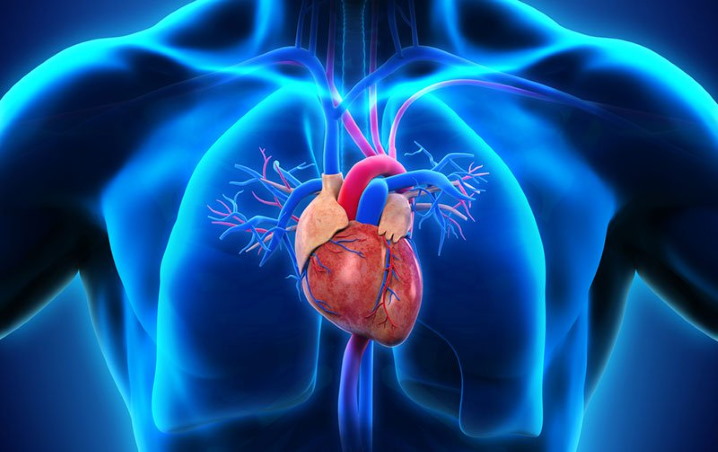Recognizing the Importance of Cardiology in Modern Healthcare Services
Cardiology plays a crucial function in modern-day medical care, especially as cardiovascular disease proceeds to be the leading cause of mortality worldwide. Advancements in diagnostics and therapy have actually changed patient treatment, enabling earlier interventions and enhanced outcomes. The shift towards preventive cardiology empowers people to handle their health proactively. As modern technology remains to advance, the assimilation of cutting-edge options may further redefine cardiology's influence on public health, motivating a better evaluation of arising patterns and their implications.
The Occurrence of Heart Problem and Its Influence On Public Health
Heart illness continues to be the leading cause of death globally, its impact expands much beyond private clients to impact public wellness systems and economic situations. The high prevalence of heart problem positions a considerable pressure on healthcare sources, requiring enhanced financing for rehabilitation, treatment, and prevention programs. Public health and wellness initiatives need to deal with danger factors such as excessive weight, smoking, and inactive lifestyles, which add greatly to the increasing occurrence of heart conditions.Moreover, the economic burden connected with heart problem is enormous, encompassing not just direct medical costs yet also indirect expenses associated with shed efficiency and early mortality. Communities encounter difficulties in taking care of these costs, typically causing variations in health care gain access to and outcomes. As the population ages and lifestyle-related risks proceed to intensify, the seriousness for reliable cardiology interventions comes to be paramount. Subsequently, attending to heart problem is not just an issue of private health yet also a vital public health and wellness concern.
Advancements in Cardiac Diagnostics and Imaging Techniques
Recent developments in heart diagnostics and imaging techniques have actually reinvented the field of cardiology, boosting the ability to keep track of and identify cardiovascular disease. Techniques such as cardiac MRI, CT angiography, and echocardiography have ended up being significantly innovative, offering comprehensive photos of heart frameworks and features. These modalities allow for the very early recognition of conditions like coronary artery illness, cardiac arrest, and valvular disorders.Moreover, advancements in non-invasive diagnostics, such as wearable technology and remote surveillance tools, have equipped clients and medical care service providers. These devices assist in real-time monitoring of heart rhythms and various other necessary signs, leading to prompt interventions. Additionally, artificial intelligence is being incorporated into imaging evaluation, enhancing precision and performance in diagnosis.
Innovations in Treatment Choices for Heart Conditions
Current improvements in cardiology have actually brought about considerable technologies in therapy choices for heart disease. These include innovative medical strategies that enhance step-by-step end results and emerging drugs that supply new opportunities for therapy. As the field progresses, these technologies play a vital role in enhancing individual treatment and end results.
Advanced Surgical Techniques
Advancements in medical methods have actually transformed the landscape of cardiology, using brand-new wish for patients with heart conditions. Minimally invasive treatments, such as catheter-based interventions, have actually significantly minimized healing times and health center remains. Strategies like robotic-assisted surgical procedure improve accuracy, permitting cosmetic surgeons to browse intricate anatomical frameworks with higher accuracy. In addition, advancements in imaging technology promote real-time visualization during procedures, boosting end results. Transcatheter aortic valve replacement (TAVR) exemplifies an advancement in treating aortic constriction, enabling valve replacement without open-heart surgery. Furthermore, hybrid strategies that incorporate surgical and catheter-based techniques supply tailored solutions for different cardiac problems. These sophisticated surgical methods not just boost person safety and security however also increase therapy options, underscoring the essential role of technology in modern-day cardiology practices.
Emerging Therapies and medicines
As the landscape of cardiology continues to develop, arising medicines and treatments play an essential role in boosting therapy choices for heart conditions. Innovations such as unique anticoagulants and advanced lipid-lowering representatives have transformed the management of cardio illness, greatly decreasing patient morbidity and mortality. In addition, the development of gene treatments and regenerative medicine uses appealing avenues for treating conditions previously considered irreversible. Professional trials are continually exposing the effectiveness of these treatments, pressing the borders of typical treatments. The combination of electronic health modern technologies promotes individualized medication, allowing for tailored treatment strategies based on genetic and lifestyle variables. Collectively, these advancements emphasize the vibrant nature of cardiology, enhancing person results and redefining standards of care in contemporary healthcare.
The Role of Preventive Cardiology in Individual Care
Preventive cardiology plays an important duty in person care by concentrating on the recognition of danger factors that add to heart disease. With lifestyle modification approaches and early discovery techniques, health care service providers can effectively reduce the occurrence of cardiovascular events - Cardiologist near me. This positive strategy not only boosts client results but likewise promotes lasting health and wellness
Threat Factor Recognition
While heart diseases remain a leading root cause of morbidity and death worldwide, effective threat element recognition works as a cornerstone of precautionary cardiology. Identifying threat variables such as high blood pressure, family members, diabetes, and hyperlipidemia background is crucial for early treatment. Medical care experts use numerous screening methods to examine these factors, allowing for tailored precautionary measures. Furthermore, recognizing an individual's way of life options, such as cigarette smoking and physical lack of exercise, further informs risk assessments. This thorough analysis allows clinicians to develop tailored treatment plans intended at mitigating threats. By focusing on threat element identification, medical care systems can boost patient outcomes and reduce the overall worry of heart diseases, eventually adding to improved public health approaches and source appropriation.
Lifestyle Alteration Techniques
A wide range of research studies highlights the important role of lifestyle alteration methods in minimizing heart disease threat. These strategies incorporate dietary changes, boosted physical task, smoking cessation, and weight monitoring. By taking on a heart-healthy diet rich in fruits, veggies, whole grains, and lean healthy proteins, individuals can reduce cholesterol degrees and high blood pressure. Routine exercise enhances the heart and improves overall cardiovascular health. In addition, quitting smoking cigarettes greatly lowers the risk of heart illness and improves recuperation prices for those with status quo. Weight management better adds to cardio health and wellness by mitigating other risk elements such as diabetes and hypertension. Implementing these lifestyle alters not just promotes individual health yet likewise you can try these out functions as a cornerstone of preventative cardiology in person treatment.
Very Early Detection Strategies
Way of living adjustments considerably add to minimizing heart disease threats, but they are most efficient when coupled with very early detection strategies. Preventative cardiology stresses the value of determining possible heart concerns prior to they escalate into significant conditions. Methods such as high blood pressure monitoring, cholesterol testing, and advanced imaging innovations like echocardiograms play vital functions in assessing cardiovascular wellness. Biomarkers and genetic screening additionally improve the precision of early discovery, allowing for customized preventative techniques. Routine heart threat assessments encourage medical care service providers to step in proactively, possibly avoiding cardiovascular disease and strokes (Cardiology). By integrating these early discovery approaches into regular care, individuals can benefit from timely way of life treatments and targeted therapies, ultimately enhancing end results and improving lifestyle
Integrating Technology Into Cardiology Practices
As advancements in innovation proceed to reshape numerous areas, the assimilation of innovative tools and systems right into cardiology practices has actually ended up being vital for improving individual care and outcomes. Telemedicine systems allow cardiologists to keep an eye on individuals from another location, improving accessibility to care while decreasing the concern on health care centers. Wearable gadgets, such as smartwatches, enable continuous heart rate monitoring, notifying both medical professionals and patients to possible concerns in real-time. Furthermore, expert system (AI) is being used to assess huge amounts of cardiac information, assisting in early diagnosis and tailored therapy strategies. Advanced imaging strategies, including 3D echocardiography, enhance visualization of heart frameworks, bring about much more accurate treatments. Electronic health documents (EHRs) streamline patient info monitoring, making sure that cardiologists have instant access to crucial information. Together, these technical improvements are changing cardiology, promoting positive management and enhanced health outcomes for individuals with cardio problems.
The Value of Patient Education and Interaction
Patient education and learning and interaction play a critical duty in the administration of cardiovascular health and wellness. By equipping clients with understanding regarding their problems, therapy choices, and lifestyle adjustments, health care service providers empower individuals to take an energetic function in their treatment. This positive method can cause boosted adherence to recommended medications, dietary changes, and exercise routines, ultimately decreasing the risk of complications.Engagement likewise fosters a strong patient-provider partnership, urging open interaction and count on. When clients feel informed and involved, they are most likely to voice problems and ask inquiries, which can result in far better medical end results. Additionally, educational resources, such as workshops or electronic systems, can enhance understanding and advertise self-management approaches. On the whole, prioritizing individual education and involvement is necessary for enhancing cardio wellness, enhancing quality of life, and lowering health care prices related to cardio illness.
Future Trends in Cardiology and Their Possible Influence

Often Asked Questions
What Way Of Living Changes Can Minimize Heart Problem Threat?
The current inquiry addresses way of living changes that can considerably lower heart condition danger. Cardiology. Taking on a balanced diet regimen, participating in normal physical activity, preserving a healthy weight, handling stress, and avoiding tobacco can significantly improve cardio wellness
Just How Can I Identify Early Indicators of Heart Issues?
Recognizing very early indications of heart issues entails tracking signs such as chest pain, shortness of breath, tiredness, and uneven heartbeat. Timely recognition of these indicators can trigger necessary clinical assessment and intervention for far better outcomes.
What Are the Distinctions In Between Cardiologists and Cardiac Surgeons?
The distinctions in between cardiologists and cardiac surgeons depend on their roles; cardiologists mostly identify and manage heart problems via non-invasive techniques, while heart cosmetic surgeons do surgeries to remedy structural heart issues. Each plays an essential, distinctive function.

Exactly how Often Should I Obtain My Heart Health Checked?
The regularity of heart checkup varies based on specific danger aspects. Usually, adults ought to go through assessments each to 2 years, while those with status quo might require more frequent evaluations as encouraged by healthcare specialists.
What Role Does Genes Play in Heart Problem Danger?
Genetics considerably influences heart problem threat, with familial patterns showing acquired conditions. Certain genes can incline individuals to high blood pressure, cholesterol issues, and other cardio problems, highlighting the significance of hereditary screening in evaluating heart health and wellness. Heart condition continues to be the leading reason of fatality worldwide, its influence extends far beyond private people to impact public wellness systems and economies. Public health efforts should attend to danger aspects such as advice excessive weight, smoking, and less active way of lives, which contribute substantially to the climbing occurrence of heart conditions.Moreover, the economic worry linked with heart disease is tremendous, including not just straight medical costs yet likewise indirect expenses associated to shed efficiency and premature mortality. Preventive cardiology plays an essential function in individual care by concentrating on the identification of threat elements that contribute to heart illness. Synthetic knowledge (AI) and machine knowing are enhancing diagnostics and client monitoring, allowing early discovery of heart conditions. The distinctions between cardiologists and cardiac doctors lie in their roles; cardiologists mostly identify and handle heart problems via non-invasive techniques, while cardiac doctors carry out medical procedures to remedy architectural heart problems.